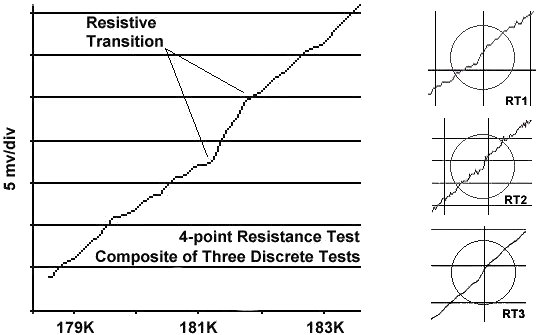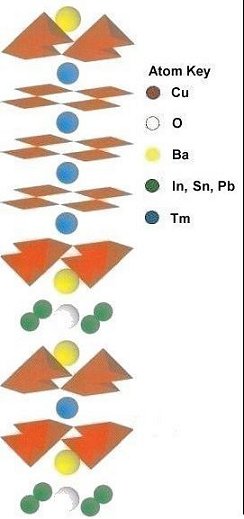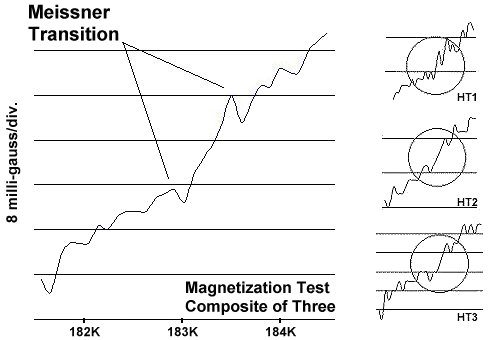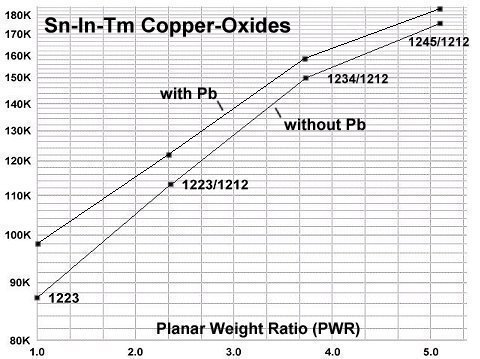

Superconductors.ORG herein reports the first observation of superconductivity over 180 Kelvin. If confirmed, this discovery will advance the world record for high-Tc to 181K.
In October of 2007, superconductivity near 175K was detected at ambient pressure in an Sn-In-Tm intergrowth. By doping roughly 28% of the Sn atomic sites of that molecule with Pb, Tc is increased further to 181K (183K magnetic). The revised chemical formula thus becomes (Sn1.0Pb0.4In0.6)Ba4Tm5Cu7O20+ with a 1245/1212 (non-stoichiometric) structure.

|
As with the 175K discovery, it was
necessary to employ a 1223/1212 host to derive trace amounts of the desired 1245/1212 phase (shown at left).
An extra 6% of one atom of Cu and 6% of one atom of Tm were added to the 1223/1212 stoichiometric
mix. (The exact mole ratio is at page bottom.)
The composite graph at page top shows the sum of three separate resistance-vs-temperature (R-T) plots that were combined in order to improve the signal-to-noise ratio. Since the volume fraction of the 181K phase was less than 1% of the bulk, spotting the superconductivity signature proved difficult. By combining three separate tests, the S/N ratio improves by approximately 4 db. In the test apparatus a regulated 7 volts was applied across the primary of a 4-point probe. The resistive transition at Tc was then measured at around 7 millivolts across the secondary. Pb-doping has previously proven beneficial in other high-Tc copper oxides. Bi-2223, Hg-1223 and Tl-1223 all responded with an increase in Tc when the insulating layers were doped with Pb. Since Sn and Pb have the same oxidation states (+2, +4), Pb substitution was a logical choice for the 175K Sn-copper-oxide, as its use will not alter the hole state of the insulating layers. Below is a composite plot of three magnetization tests. The magnetometer uses twin Honeywell SS94A1F Hall-effect sensors with a tandem sensitivity of 50 mv/gauss. An unambiguous diamagnetic component appears between 183K and 184K. |



Synthesis of the 1223/1212 host was by the solid state reaction method. Stoichiometric amounts of the below precursors were mixed, pelletized at 70,000 psi and sintered for 36 hours at 830C. The pellet was then annealed for 10 hours at 500C in flowing O2.
SnO 99.9% (Alfa Aesar) 1.17 grainsRESEARCH NOTE: Tm-copper-oxides have been found to be strongly hygroscopic. All tests should be performed immediately after annealing.
- E. Joe Eck
© 2008 Superconductors.ORG
Patent Pending. All rights reserved.
 BACK to "News" page at Superconductors.ORG
BACK to "News" page at Superconductors.ORG